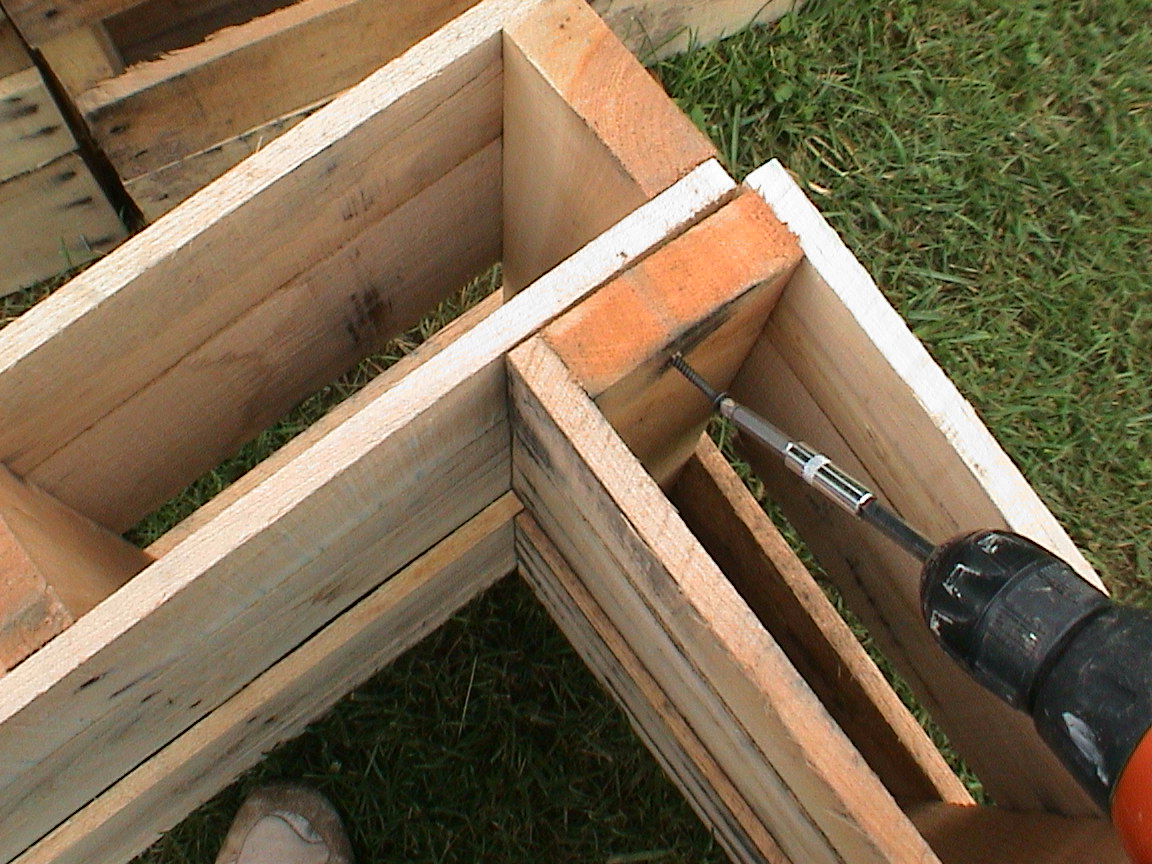Thursday, 21 November 2024
Affordable DIY Pallet Shed Plans for Organizing Your Outdoor Space

Affordable DIY Pallet Shed Plans for Organizing Your Outdoor Space
The desire for organized outdoor space is universal, yet the cost of pre-fabricated sheds can be prohibitive. This article presents comprehensive, affordable DIY pallet shed plans, empowering homeowners to create functional and aesthetically pleasing storage solutions at a fraction of the commercial price. By utilizing reclaimed pallets, readily available materials, and straightforward construction techniques, you can transform your cluttered yard into a well-organized haven.
Assessing Your Needs and Choosing the Right Pallet Shed Design
Before embarking on your DIY project, careful planning is paramount. Consider the following factors to determine the optimal pallet shed design for your specific requirements:
Determining Size and Functionality
The dimensions of your shed will depend on the storage capacity you need. Measure the items you intend to store to estimate the necessary internal volume. Consider factors such as the number of garden tools, outdoor equipment, and other items you require storage for. A smaller shed might suffice for basic tools, while larger projects may necessitate a more expansive structure.
Site Selection and Preparation
Choose a level, well-drained location for your shed. Avoid areas prone to flooding or excessive shade. Clear the designated area of any debris, vegetation, or obstructions. Consider the proximity to power sources if you plan to incorporate electrical elements within the shed. Proper site preparation minimizes construction difficulties and ensures structural integrity.
Choosing the Right Pallets
Sourcing high-quality pallets is crucial. Inspect each pallet carefully for signs of rot, damage, or pest infestation. Prioritize pallets constructed from sturdy, untreated lumber for longevity and safety. The number of pallets required will directly correlate with the desired shed dimensions. Plan your design based on the dimensions of the pallets you acquire. Consider using a mix of sizes if necessary for more intricate designs.
Materials and Tools for Pallet Shed Construction
Beyond the reclaimed pallets, several additional materials and tools are required for a successful pallet shed construction. A detailed inventory ensures a smooth and efficient building process.
Essential Materials
- Reclaimed pallets (quantity dependent on shed size)
- Pressure-treated lumber for the base frame (if necessary)
- Roofing materials (e.g., corrugated metal, asphalt shingles)
- Screws (exterior-grade, galvanized)
- Nails (galvanized or exterior-grade)
- Wood glue
- Weatherproofing sealant
- Paint or stain (optional, for aesthetics and protection)
- Hinges for the door(s)
- Door handle and latch
Essential Tools
- Measuring tape
- Level
- Hammer
- Screwdriver (both Phillips and flathead)
- Drill (with appropriate drill bits)
- Saw (circular saw or hand saw)
- Safety glasses
- Work gloves
- Shovel (for site preparation)
Step-by-Step Pallet Shed Construction Guide
This section details a basic pallet shed construction process. Variations and modifications can be implemented based on the chosen design and available resources. Remember to always prioritize safety and wear appropriate personal protective equipment (PPE).
Step 1: Building the Foundation
Construct a sturdy base for your shed, either directly on the ground (using landscaping fabric and gravel for weed control and drainage) or on a raised platform made of pressure-treated lumber. The foundation provides essential stability and protects the shed from moisture damage.
Step 2: Assembling the Walls
Carefully disassemble the pallets to remove any loose or damaged boards. Clean the boards and repair any cracks or damage. Construct the walls by fastening the reclaimed pallet boards together using screws and wood glue. Ensure the walls are square and plumb throughout the construction process. Additional support beams may be necessary for larger shed designs.
Step 3: Erecting the Frame
Once the walls are assembled, erect the frame, ensuring proper alignment and stability. Use additional supporting beams as required to reinforce the structure. This step is critical for overall structural integrity and long-term durability. Consider using corner bracing for added strength.
Step 4: Installing the Roof
Construct the roof frame using pressure-treated lumber. The roof design can be simple (single or gable roof) or more complex depending on your preference. Secure the roofing materials according to manufacturer's instructions. Ensure sufficient overhang to protect the walls from rain and snow.
Step 5: Adding the Door and Finishing Touches
Install the door using hinges, ensuring smooth operation. Add a latch and handle for security. Apply weatherproofing sealant to all joints and gaps to protect against moisture. Paint or stain the shed for aesthetic appeal and added protection against the elements. Consider adding additional features like shelving or workbenches inside.
Safety Precautions and Considerations
Safety should be a paramount concern throughout the entire project. Always follow these guidelines:
- Wear appropriate personal protective equipment (PPE): Safety glasses, work gloves, and sturdy footwear are essential.
- Use caution when working with power tools: Ensure proper training and understanding of safety protocols before using any power tools.
- Inspect pallets carefully: Remove any loose nails, splinters, or damaged boards before use.
- Ensure proper ventilation: If working in an enclosed space, ensure adequate ventilation to prevent inhaling dust or fumes.
- Secure the structure adequately: Properly anchor the shed to the ground to prevent it from toppling over in strong winds.
- Follow local building codes: Consult your local building department for any relevant permits or regulations.
Conclusion
Building an affordable DIY pallet shed offers a rewarding and cost-effective solution for organizing your outdoor space. By carefully planning the design, sourcing appropriate materials, and following the construction guidelines outlined in this article, you can transform your cluttered yard into a functional and aesthetically pleasing area. Remember to prioritize safety throughout the process and enjoy the satisfaction of creating something beautiful and useful with your own hands.
No comments:
Post a Comment
Note: only a member of this blog may post a comment.